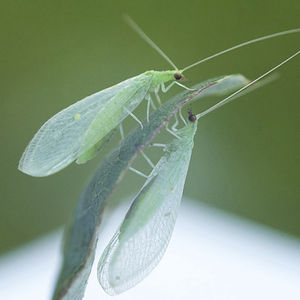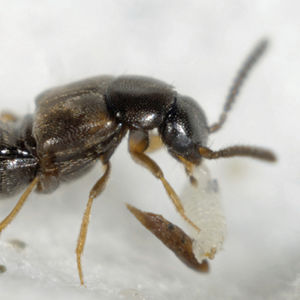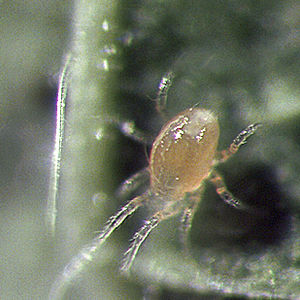
- Seeds and crop inputs
- Crop input
- Against Thrips mite
- Beneficial Insectary Inc

- Products
- Catalogs
- News & Trends
- Exhibitions
Against fly mite STRATIOforce™against Thripslarvaadult
Add to favorites
Compare this product
fo_shop_gate_exact_title
Characteristics
- Target
- against fly, against Thrips
- Other characteristics
- larva, adult, egg
Description
Stratiolaelaps scimitus (formerly Hypoaspis miles) is a soil-dwelling mite capable of the prevention, control, and management of sciarid flies, shore flies and various thrips and soil pests. Not only are these mites predators of thrips’ prepupal and pupal stages, they are very effective fungus gnat predators as well. S. scimitus are shipped as adults, immatures and eggs in liter-size shaker canisters filled with a loose vermiculite carrier and a percentage of clean peat, and some bran added for good measure. In this form, S. scimitus are very easy to distribute in the crop. S. scimitus can help prevent thrips from becoming intolerable.
These robust 0.8 mm. richly-colored tan to brown mites live, eat and reproduce in the soil or soilless medium in containers and planters and, on the walkways and floors of greenhouses (or on the Shiitake logs in the mushroom scenario). The S. scimitus females’ eggs — of which there are many — hatch into super small larvae which develop into tiny dark brown, almost black, nymphal forms before reaching adulthood. These, too, are fierce predators, consuming many pests, mostly the eggs and smaller larvae (first and second instar) of fungus gnats and the pupal stages of thrips. The life-span of these predators is about 13 days from egg to adult. But they reproduce profusely in what little time they have. The conditions for optimum performance will be between 60-72°F, and we’re talking about soil temperatures, with a relative humidity equal to that found in a friable, slightly moist medium, compost or soil. But these are optimum conditions, and not necessarily a prerequisite of successful implementation.
*Prices are pre-tax. They exclude delivery charges and customs duties and do not include additional charges for installation or activation options. Prices are indicative only and may vary by country, with changes to the cost of raw materials and exchange rates.





